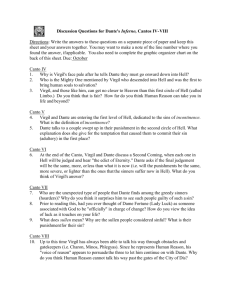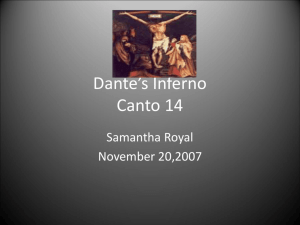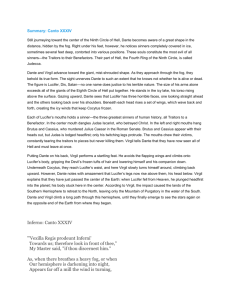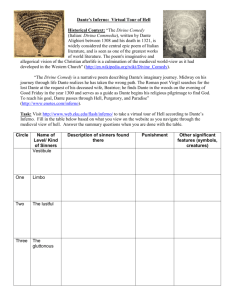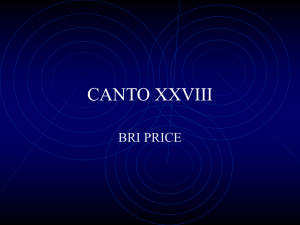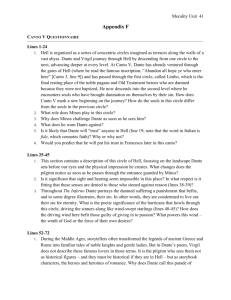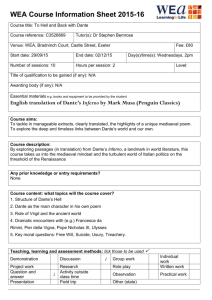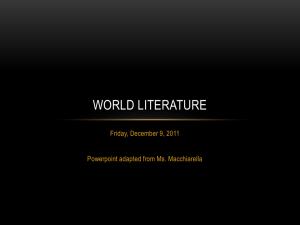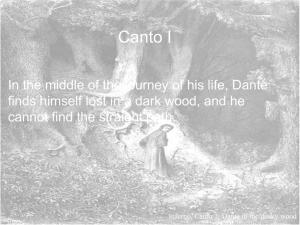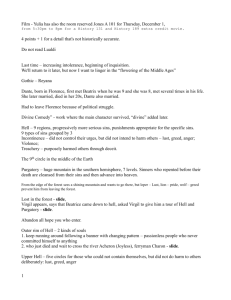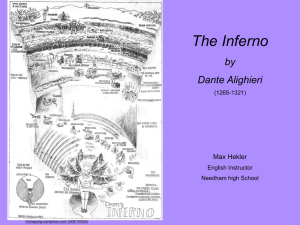Brutus and Cassius in Dante's Inferno Inferno opens on the evening
advertisement
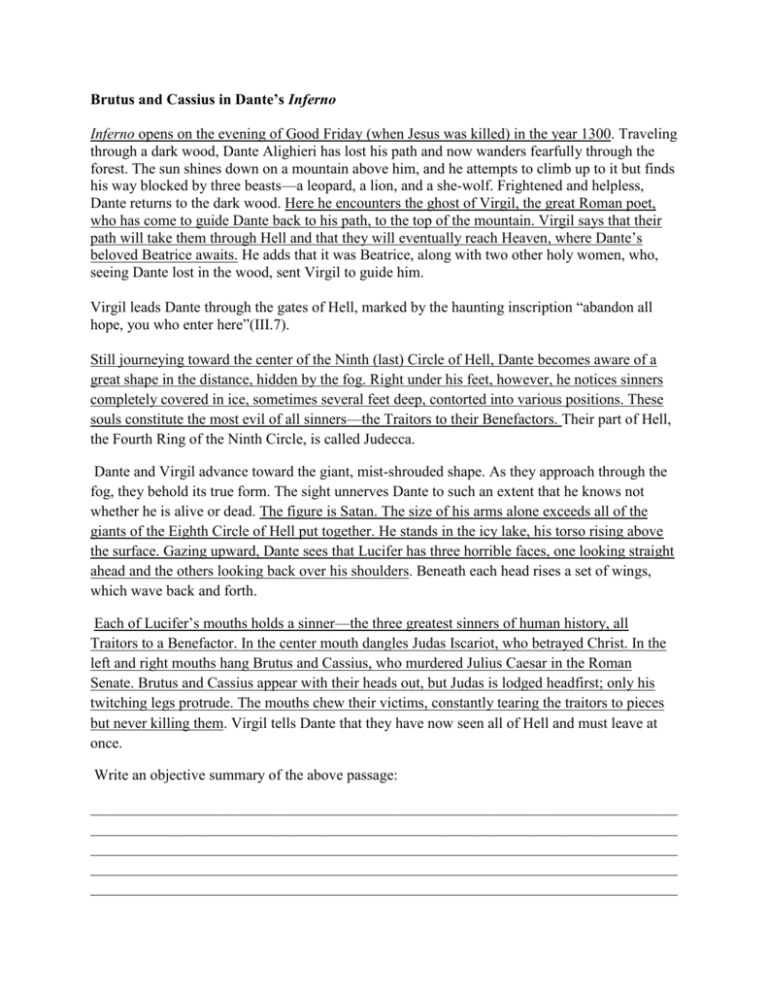
Brutus and Cassius in Dante’s Inferno Inferno opens on the evening of Good Friday (when Jesus was killed) in the year 1300. Traveling through a dark wood, Dante Alighieri has lost his path and now wanders fearfully through the forest. The sun shines down on a mountain above him, and he attempts to climb up to it but finds his way blocked by three beasts—a leopard, a lion, and a she-wolf. Frightened and helpless, Dante returns to the dark wood. Here he encounters the ghost of Virgil, the great Roman poet, who has come to guide Dante back to his path, to the top of the mountain. Virgil says that their path will take them through Hell and that they will eventually reach Heaven, where Dante’s beloved Beatrice awaits. He adds that it was Beatrice, along with two other holy women, who, seeing Dante lost in the wood, sent Virgil to guide him. Virgil leads Dante through the gates of Hell, marked by the haunting inscription “abandon all hope, you who enter here”(III.7). Still journeying toward the center of the Ninth (last) Circle of Hell, Dante becomes aware of a great shape in the distance, hidden by the fog. Right under his feet, however, he notices sinners completely covered in ice, sometimes several feet deep, contorted into various positions. These souls constitute the most evil of all sinners—the Traitors to their Benefactors. Their part of Hell, the Fourth Ring of the Ninth Circle, is called Judecca. Dante and Virgil advance toward the giant, mist-shrouded shape. As they approach through the fog, they behold its true form. The sight unnerves Dante to such an extent that he knows not whether he is alive or dead. The figure is Satan. The size of his arms alone exceeds all of the giants of the Eighth Circle of Hell put together. He stands in the icy lake, his torso rising above the surface. Gazing upward, Dante sees that Lucifer has three horrible faces, one looking straight ahead and the others looking back over his shoulders. Beneath each head rises a set of wings, which wave back and forth. Each of Lucifer’s mouths holds a sinner—the three greatest sinners of human history, all Traitors to a Benefactor. In the center mouth dangles Judas Iscariot, who betrayed Christ. In the left and right mouths hang Brutus and Cassius, who murdered Julius Caesar in the Roman Senate. Brutus and Cassius appear with their heads out, but Judas is lodged headfirst; only his twitching legs protrude. The mouths chew their victims, constantly tearing the traitors to pieces but never killing them. Virgil tells Dante that they have now seen all of Hell and must leave at once. Write an objective summary of the above passage: ______________________________________________________________________________ ______________________________________________________________________________ ______________________________________________________________________________ ______________________________________________________________________________ ______________________________________________________________________________ What is Dante's perception of Brutus and Cassius? Use evidence from the text to strengthen your argument. ______________________________________________________________________________ ______________________________________________________________________________ _____________________________________________________________________________ How does Dante's perception of Brutus compare to Shakespeare's? Use evidence from both texts to strengthen your argument.

